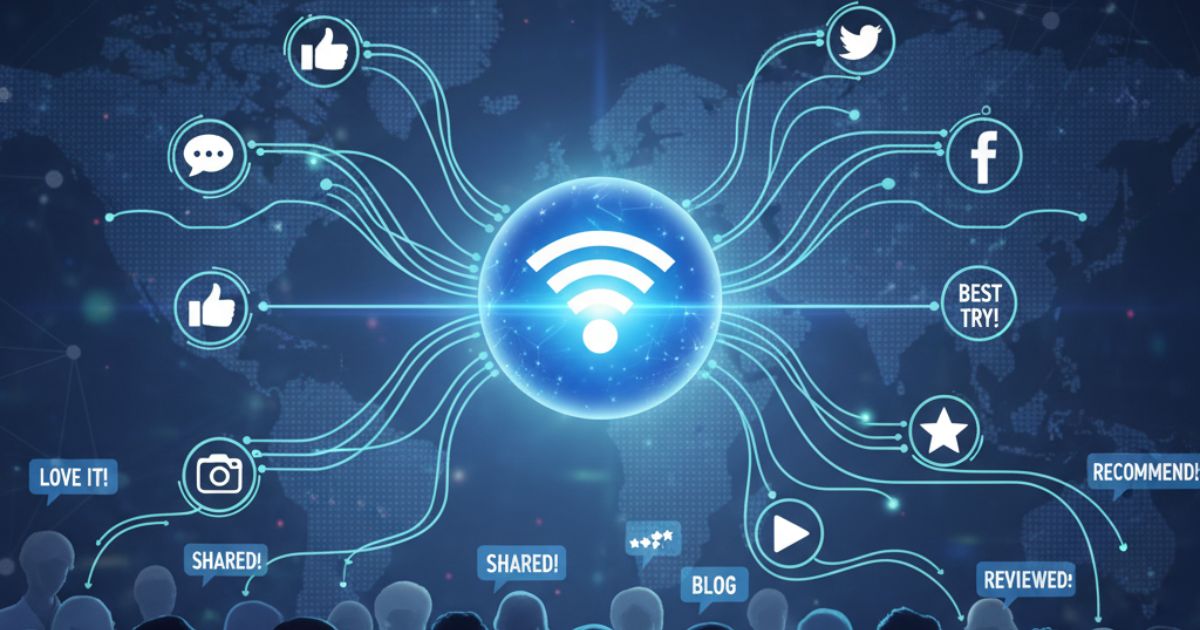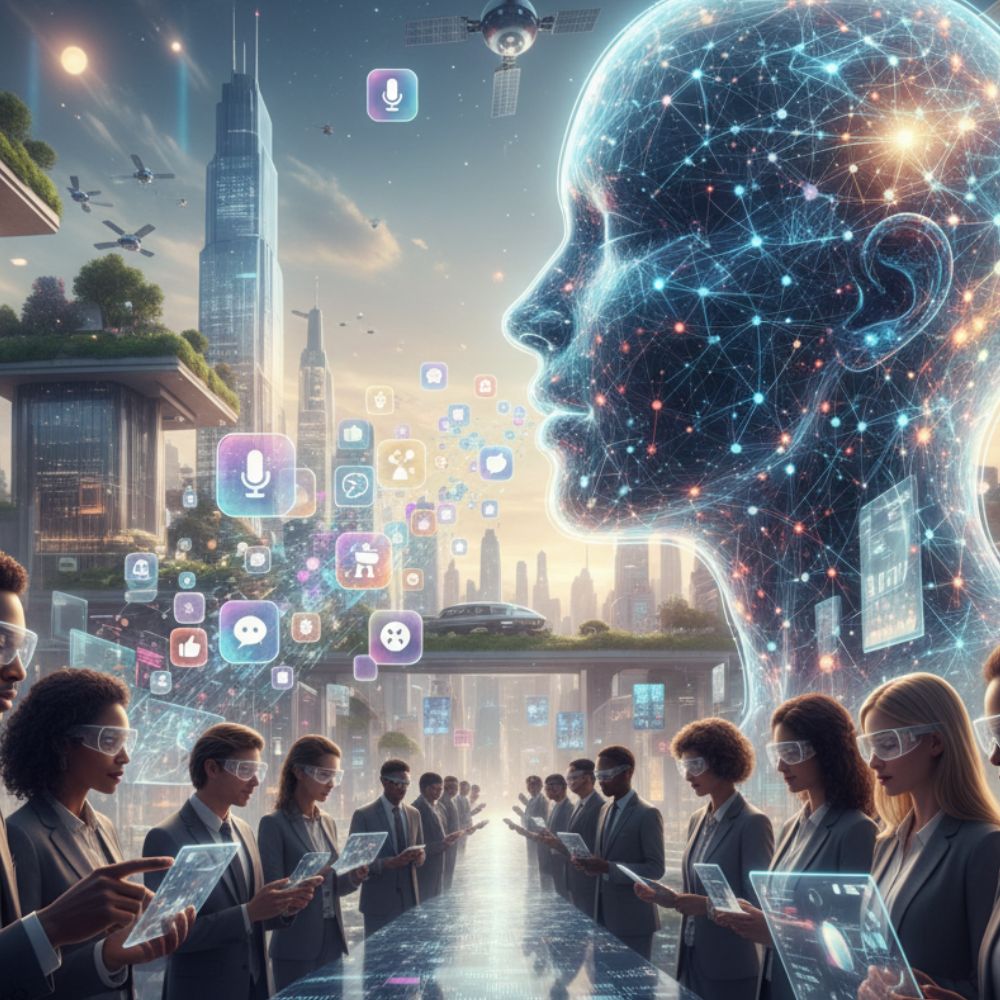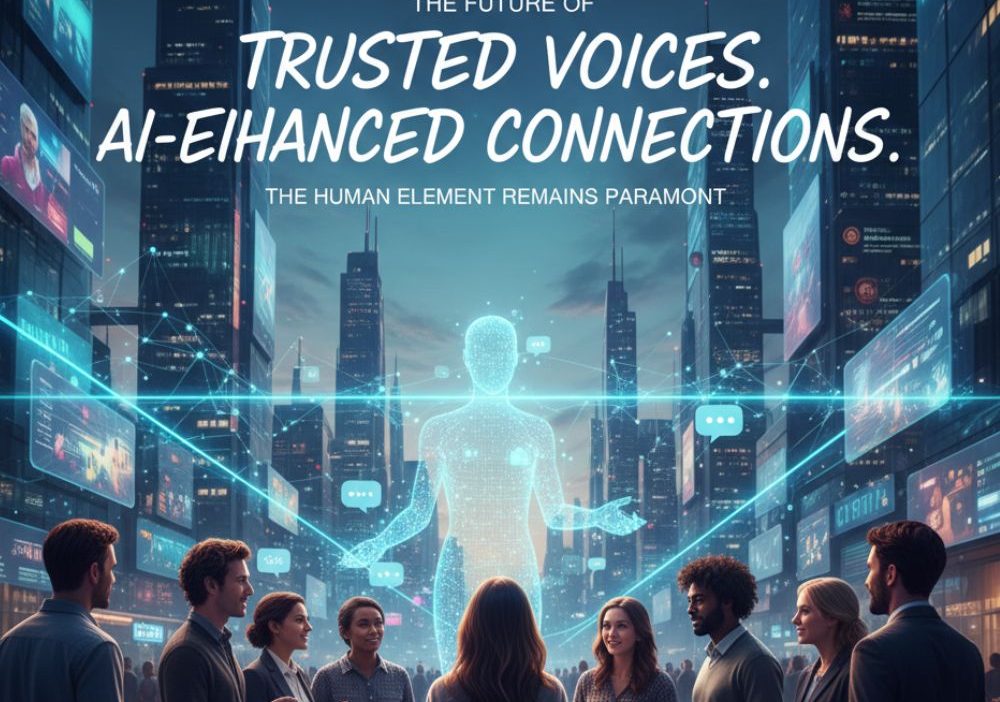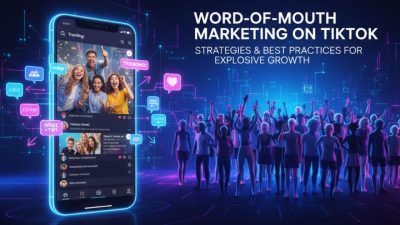For generations, word-of-mouth marketing (WOMM) has been the gold standard for building trust. A recommendation from a friend or family member carries more weight than any paid advertisement ever could. This fundamental human behaviour of sharing experiences and opinions has built empires and shaped consumer choices long before marketing became a formal discipline.
However, as artificial intelligence reshapes every corner of our lives, the very nature of communication is undergoing a transformation. AI marketing tools can personalize content, predict consumer behavior, and automate interactions on a massive scale. This raises an important question: what is the future of WOMM in a post-AI world? Does the rise of algorithms and automated systems spell the end for authentic, human-to-human recommendations?
The answer is not a simple yes or no. Instead of replacing word-of-mouth, AI is set to amplify it, creating a new, hybrid landscape of digital influence. This post will explore how AI is transforming traditional WOMM, what these changes mean for businesses, and how you can prepare for the future of digital WOMM.
What is Digital Word-of-Mouth Marketing (WOMM)?

At its core, word-of-mouth marketing is an organic form of promotion where satisfied customers share their positive experiences with a brand, product, or service. In the past, this happened over the garden fence or at the local coffee shop. Today, it happens online.
Digital word-of-mouth marketing (Digital WOMM) encompasses all the ways consumers share their opinions in the digital space. This includes everything from writing an online review and posting on social media to tagging a brand in an Instagram story. It’s faster, has a much wider reach, and is more measurable than its offline predecessor. Brands can track mentions, analyze sentiment, and engage directly with the people talking about them.
The Intersection of AI Marketing and Digital Influence
The introduction of AI marketing is adding a powerful new layer to digital WOMM. AI algorithms can analyze vast amounts of data to identify patterns and predict outcomes, giving businesses unprecedented insight into consumer conversations and behaviors. This is where AI and digital influence converge.
AI isn’t just about automation; it’s about understanding and enhancing human connection at scale. Here’s how AI is changing the game:
- Identifying Influencers and Advocates: AI tools can scan social media and other platforms to identify not just macro-influencers with millions of followers, but also micro-influencers and genuine brand advocates who have high engagement within niche communities. This enables brands to establish more authentic relationships with individuals who genuinely appreciate their products.
- Personalizing Customer Experiences: AI can analyze customer data to create highly personalized experiences. When a customer feels understood and valued, they are far more likely to share their positive experience with others. A personalized thank-you email or a product recommendation that perfectly matches their needs can be the spark that ignites positive WOMM.
- Analyzing Sentiment and Feedback: How do people really feel about your brand? AI-powered sentiment analysis can instantly process thousands of reviews, comments, and mentions to give you a clear picture of public perception. This allows you to quickly address negative feedback before it spreads and amplify positive stories.
Preparing for the Future of WOMM

The future of WOMM lies in a strategic partnership between human authenticity and AI-driven efficiency. Businesses that embrace this synergy will be better equipped to build trust, foster loyalty, and drive growth. Here’s how you can prepare your brand.
1. Harness AI to Listen at Scale
You can’t be part of the conversation if you don’t know it’s happening. Manually tracking brand mentions is impossible. AI-powered social listening tools can monitor conversations across the web in real-time, giving you a constant pulse on what people are saying about your brand, your competitors, and your industry. Use these insights to engage with customers, answer questions, and show that you are paying attention.
2. Empower Your Brand Advocates
Your happiest customers are your most powerful marketers. Use AI to identify these advocates and give them the tools and encouragement to share their stories. This could involve:
- Creating an exclusive community or forum for your top customers.
- Offering them early access to new products.
- Providing them with shareable content that makes it easy to spread the word.
- Running a referral program that rewards them for bringing in new customers.
3. Foster Authenticity in an AI-Driven World
As consumers become increasingly aware of AI’s role in marketing, the demand for authenticity is expected to grow. People can spot an insincere, AI-generated message from a mile away. While AI can help you personalize and scale your communications, the message itself must remain genuine and human.
Encourage user-generated content (UGC) by running campaigns that invite customers to share their photos, videos, and stories. Highlight these real experiences on your social media channels and website. This form of social proof is one of the most powerful drivers of digital WOMM because it comes from a place of genuine enthusiasm.
4. Optimize for AI-Powered Search Engines
The way people find information is changing. Generative AI search engines like Google’s AI Overviews and Perplexity are starting to provide direct answers to questions, often by summarizing reviews and forum discussions. To ensure your brand is represented positively in these AI-generated answers, you need to cultivate a strong foundation of positive digital WOMM.
Encourage satisfied customers to leave detailed reviews on platforms like Google, Yelp, and Trustpilot. Engage in relevant online communities and forums where people are asking questions related to your industry. The more positive, human-generated content there is about your brand online, the more likely AI engines will be to feature it in their answers.
Your Next Move in the New Era of Marketing
The fundamentals of word-of-mouth marketing—trust, authenticity, and human connection—remain unchanged. What has changed is the playground. AI has created new tools and opportunities for businesses to listen, understand, and engage with their customers on an unprecedented scale.
The future belongs to brands that can strike the right balance between technology and humanity. By leveraging AI to amplify authentic customer voices, you can establish a robust and sustainable marketing engine that cultivates loyalty and drives sustained growth. Don’t view AI as a threat to genuine connection; see it as a powerful tool to nurture it.
Start by listening. Implement a tool to track what people are saying about you online. The insights you gather will be the first step toward building a more robust and effective word-of-mouth marketing strategy for the AI era.
Frequently Asked Questions
What is the difference between word-of-mouth marketing and influencer marketing?
Word-of-mouth marketing is typically organic and comes from genuine customers who are not paid to promote a product. Influencer marketing is a paid strategy where a brand partners with individuals who have an established online following to promote their products or services. While related, WOMM is earned, while influencer marketing is paid.
Can AI replace human marketers in WOMM?
No, AI is a tool to enhance, not replace, human marketers. AI can handle data analysis and automation, freeing up human marketers to focus on strategy, creativity, and building genuine relationships with customers and influencers. Authenticity, which is crucial for effective WOMM, requires a human touch.
How can a small business leverage AI for word-of-mouth marketing?
Small businesses can start by utilizing affordable AI-powered social media management tools to monitor conversations and analyze sentiment. They can also use AI features within their email marketing platforms to personalize communication. Encouraging online reviews and creating a simple referral program are also effective, low-cost ways to generate digital WOMM.





